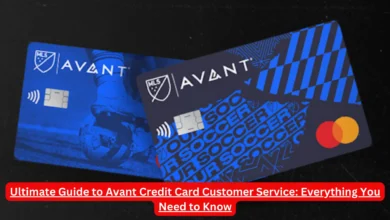Credit Cards After Bankruptcy

Bankruptcy can be a significant setback, but it doesn’t have to mark the end of your financial journey. One of the first steps toward rebuilding credit after bankruptcy is securing a credit card. But when can you apply for a credit card after bankruptcy, and how should you approach this process wisely? We explore the ins and outs of obtaining credit cards after bankruptcy, including best practices, the types of cards to consider, and how to avoid falling into financial pitfalls again.
Understanding Bankruptcy and Its Impact on Your Credit
Bankruptcy can significantly damage your credit score. Whether you file for Chapter 7 or Chapter 13 bankruptcy, the event will likely remain on your credit report for 7 to 10 years. During this time, lenders will see you as a high-risk borrower, making it more difficult to obtain new credit lines. However, bankruptcy also gives you a clean slate, allowing you to focus on rebuilding your financial standing.
The key is to start small, with a realistic plan in mind. This is where credit cards after bankruptcy come into play, offering a structured way to prove your financial responsibility again.
When Can You Apply for a Credit Card After Bankruptcy?
Chapter 7 Bankruptcy
In the case of Chapter 7 bankruptcy, the process generally takes about three to six months from the time you file until your debts are discharged. Once your debts are discharged, you may become eligible to apply for a credit card. Some individuals may be tempted to apply for a credit card immediately after their case is closed, but it’s essential to approach this with caution. Typically, waiting about three to six months after your discharge allows you to assess your financial situation and ensures you are ready to handle new credit.
Chapter 13 Bankruptcy
With Chapter 13 bankruptcy, the process is a bit more prolonged, as it involves a repayment plan that typically lasts three to five years. During this period, you might have limited access to new credit. However, you can request permission from the bankruptcy court to apply for a credit card if it is deemed necessary for your rehabilitation.
Once the repayment plan is complete and your remaining debts are discharged, you will be in a better position to apply for credit cards. Similar to Chapter 7, it’s advisable to wait at least a few months to a year before applying to give yourself time to stabilize your finances.
Best Types of Credit Cards to Consider After Bankruptcy
When it comes to credit cards after bankruptcy, not all options are equal. Choosing the right card will largely depend on your current financial situation, goals, and credit status post-bankruptcy.
1. Secured Credit Cards
A secured credit card is typically the most accessible option for individuals coming out of bankruptcy. With a secured card, you are required to make a security deposit, which acts as collateral in case you default on payments. The credit limit on these cards often equals your deposit amount, making them a low-risk option for lenders.
Why choose a secured card?
- Easy approval: Secured credit cards are designed for people with poor or no credit.
- Rebuild credit: They report to the major credit bureaus, helping you rebuild your credit score over time.
2. Subprime Credit Cards
Subprime credit cards are offered to borrowers with low credit scores, typically under 600. While easier to obtain than traditional cards, these come with high interest rates and fees. It’s crucial to read the terms and conditions thoroughly to avoid falling into a cycle of debt.
Why choose a subprime card?
- Approval with bad credit: These cards are available even if your credit score is severely damaged.
- Potential stepping stone: While not ideal due to high fees, subprime cards can be a short-term solution to start rebuilding credit.
3. Retail Store Credit Cards
Some retail store credit cards may be easier to obtain after bankruptcy, but they come with limitations. Store cards can only be used at specific retailers, and they often carry higher interest rates. Still, they offer an opportunity to re-establish credit with responsible use.
Why choose a retail card?
- Lower qualification requirements: Retail cards often have less stringent credit score requirements.
- Build credit history: They also report to the credit bureaus, aiding in your credit-building efforts.
How to Improve Your Chances of Getting Approved for a Credit Card After Bankruptcy
Even though credit cards after bankruptcy may seem within reach, approval is not guaranteed. Here are strategies to improve your chances of getting approved:
1. Monitor Your Credit Report
Before applying for any credit card, it’s crucial to review your credit report to ensure that your bankruptcy has been accurately reported and that all discharged debts have been removed. Mistakes on your credit report can lower your score and make it more difficult to obtain a credit card.
2. Start with a Secured Card
A secured credit card is usually the best first step in your post-bankruptcy journey. These cards are often available to individuals with low credit scores, and with responsible use, they can help you establish a positive payment history, leading to improved creditworthiness over time.
3. Apply Gradually
It’s important to resist the temptation to apply for multiple credit cards simultaneously. Each application triggers a hard inquiry on your credit report, which can negatively affect your credit score. Focus on applying for one card, using it responsibly, and allowing your score to recover before considering additional credit lines.
4. Keep Balances Low
Once approved for a credit card, aim to keep your balances low and pay off your statement in full each month. Keeping your credit utilization ratio (the percentage of your credit limit you’re using) below 30% is a key factor in rebuilding your credit score.
Rebuilding Your Credit Score After Bankruptcy
After bankruptcy, rebuilding your credit is a long-term effort, but the right strategies can accelerate your progress.
1. Make Timely Payments
Nothing impacts your credit score more than consistent, on-time payments. Set up reminders or automatic payments to ensure you never miss a due date. Even one missed payment can significantly affect your credit recovery process.
2. Diversify Your Credit Mix
As your credit improves, consider adding other types of credit to your financial profile. This could include an installment loan, such as a car loan, or even a personal loan. A diverse credit mix shows lenders that you can handle different types of credit responsibly.
3. Check Your Credit Regularly
Monitoring your credit score and credit report regularly will help you track your progress and identify any issues before they become problems. Many credit card issuers offer free credit monitoring services, which can be invaluable in your rebuilding efforts.
Avoid Common Mistakes After Bankruptcy
As you rebuild your credit, it’s essential to avoid common mistakes that can set you back. Overusing credit, missing payments, or applying for too many cards can undo the progress you’ve made. Remember, slow and steady wins the race. Focus on making responsible financial choices, and your credit score will improve over time.



